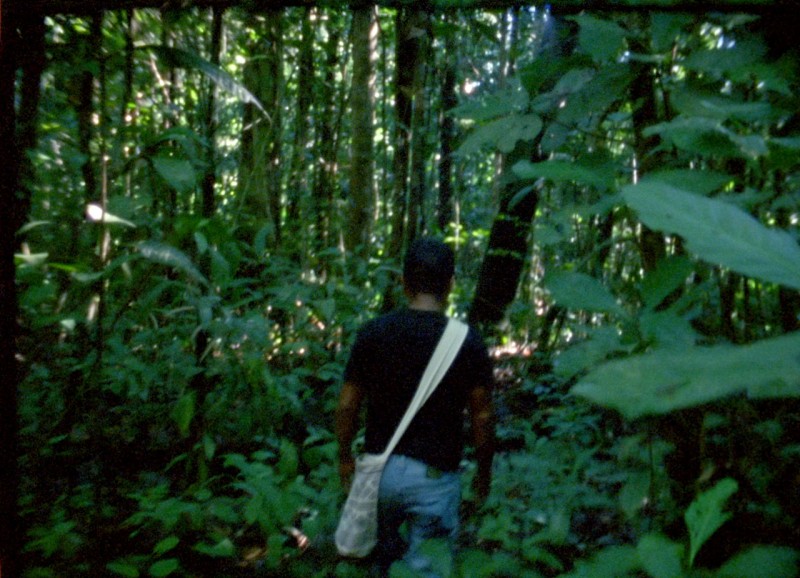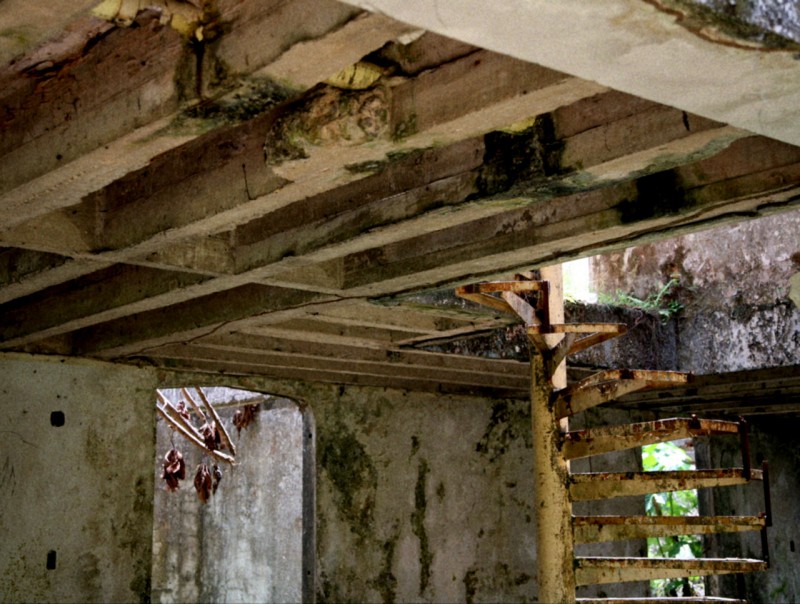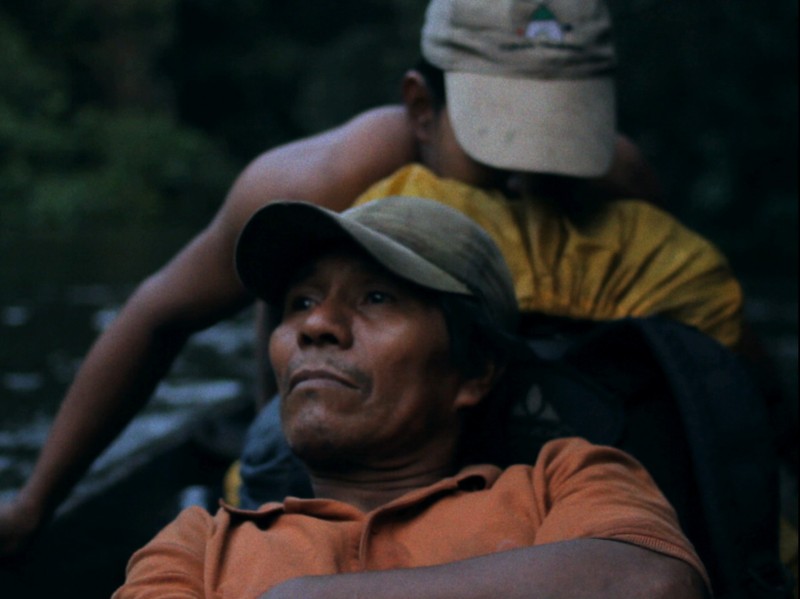Laura Huertas Millán
The Labyrinth
* 1983, Bogotá, COL, lives and works in Paris, FRA
studied at the Beaux-Arts de Paris, FRA, Le Fresnoy, Tourcoing, FRA, and the Harvard University, USA
The Labyrinth revives the memories of an indigenous worker, who was involved in the Colombian drug business in the 1980s, and interweaves them with snippets from the American cult serial Dynasty. More and more, he turns into a protagonist in an entangled story. The resulting rift between reality and fiction gives rise to an uneasy feeling.
How strong the aspiration for an American lifestyle was is made clear by the story of the drug baron Evaristo Porras that serves as a foil for the film and is partially retold. He had the mansion featured in Dynasty rebuilt, but little is left of the former splendor: In Huertas Millán’s film, we see dilapidated architecture, spray-painted walls, and heaps of garbage in the once so glamorous masonry. The quickly acquired wealth is gone, the dream house is in ruins, the patron died in poverty—the soundtrack features dialogues from the serial.
To highlight this paradox, the shots are deliberately contrasted not only by the soundtrack but also by image material from the serial. The snippets and found footage of the jungle have the same picture format, thus establishing a uniform frame that constantly leads to contradictions but appears fitting all the same. The images appear uncomplicated, searching, almost without orientation, and convey a certain immediacy.
The narration then changes. We see the moon, and the worker gives an account of his near-death experience. At this point, Huertas Millán reaches the limits of what can be depicted. The hallucination most likely caused by constant contact with drugs can only be experienced by one person. In the following, the mansion reappears: It stands for the disaster of the drug dynasty coupled with the desire to disavow the indigenous culture and impose one’s own views and lifestyle on others. Yet despite setbacks, the origins prevail, they know how to survive, and in the end they flourish again. The lively flames and the sounds of the final scene give the impression of a memorial. The story seems to build up and branch out like a labyrinth—comparable with the history of indigenous culture in Colombia that through drug trafficking and Western influences has lost a part of its identity and now wants to find it again.
Anneliese Jankowicz
Artist Statement
Entwining ethnography, ecology, fiction and historical enquiries, my moving-image practice engages with strategies of resistance and resilience against political and social violence. My works are infused by the real, so each project builds a space of complexity and experimentation, where fixed identities are questioned and altered, and the dominant narratives contested. The themes inhabiting my practice are all related to the representation of alterity. Working in series and throughout long times of research, I have developed works on exoticism (2009-2012), on ethnographic fictions (2012-2018), and now around the notion of pharmakon (the poison and the healer). The labyrinth (2018) is at the crossroads of these two last enquiries. The syncretic form of the film (mixing 16mm, found footage, HD and shot in several different years) echoes the refracted ways in which History is written, in between testimonies, mass media and heterogeneous traces. Narcocapitalism here rises from colonial and imperialist vestiges; the film evokes this situation and soon flips in its testimonial structure to give the narrator the space to tell an intimate near-death experience. The uncanniness of this last story transport the film elsewhere, it becomes an altered state, a dream of survival.
Laura Huertas Millán


